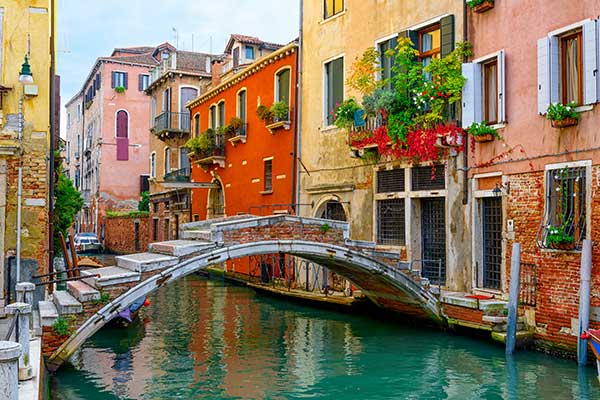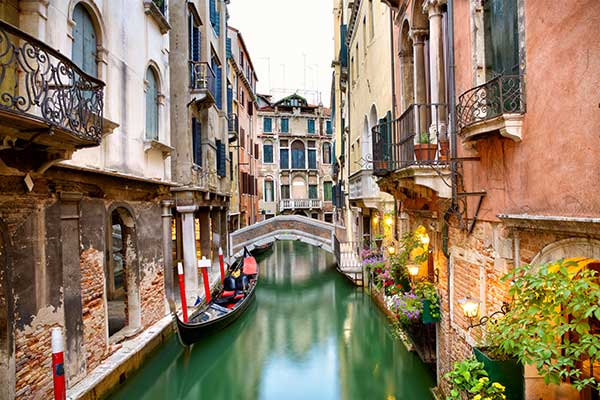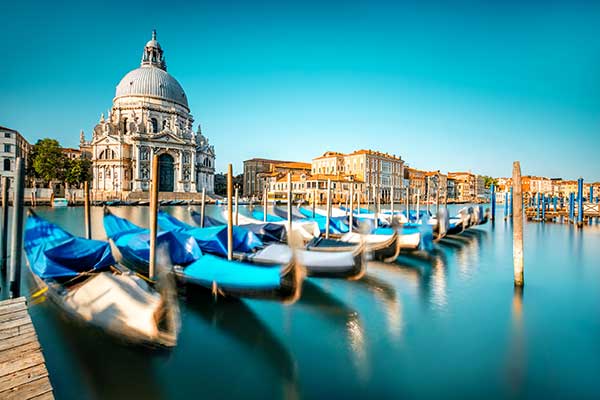Summer in a Lagoon
Venice and its lagoon compose an unforgettable landscape, with the city of Venice pulsating with history, art, and all things beautiful. It is an experience, a journey of the senses that lingers long after the last vaporetto and gondola has sailed into the night.
It is said that everyone should visit Venice before they leave earth. Once there, you will know why.
Sitting on a cluster of 118 tiny islands in a lagoon so spectacular that it is a World Heritage Site, Venice has regularly been ranked as the most beautiful city on earth. Bursting with history—the city was founded in the 5th century—and culture and architectural masterpieces galore, Venice cries out to be explored. Linked by 400 bridges, even its smallest building boasts of works by some of the world’s greatest artists—Giorgione, Titian, Tintoretto, Veronese….

Once upon a time the bustling centre of a trading empire and the richest metropolis in Europe, today, even while grappling with rising sea water and some subsidence, Venice continues to remain La Serenissima, the most serene or sublime.
Stepping into this floating marvel after a water taxi or vaporetti ride from the Marco Polo airport’s pontoon, feels like entering a dream, where reality blurs with fantasy, and every corner reveals a new layer of romance. While May to October is good for visits, Venice does not have a low season really. Just quieter months. And even during peak season, quieter neighbourhoods. Just step a few blocks away from the city’s blockbuster sights and the teeming crowds, and you will discover how true it is.
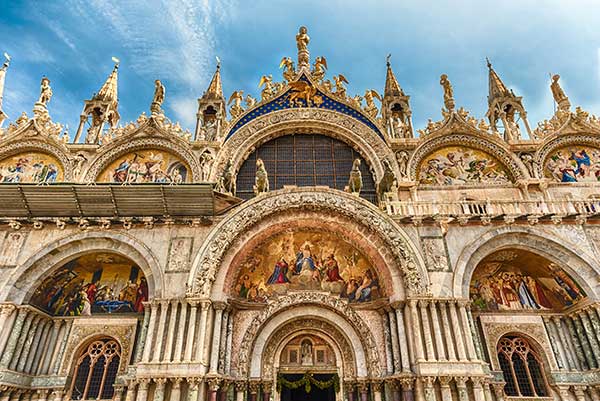
the must-see sights
As dawn breaks over the Adriatic Sea, Venice awakens in a soft, golden hue, casting a spell of serenity over its maze-like alleys and bustling waterways. The morning mist hangs delicately over the Grand Canal, shrouding ancient palazzos and ornate bridges in an ethereal veil. Especially Rialto Bridge, a flouncy must-walk-over bridge over the Canal that is made of gleaming Istrian stone and which, on the western side, also leads to an over-1000-year-old market that is today a lively assembly of fish, fruit and vegetable stalls. Near the bridge is also the store that designed Venetian masks (a must-buy!!) for the film Eyes Wide Shut.
Without a doubt, the majestic Piazza San Marco is the priority call; for most, this waterfront square is Venice. Hosting the iconic Basilica di San Marco, Palazzo Ducale, the Renaissance style Torre dell’ Orologio, Museo Correr, and Campanile, the Piazza is quite like how Napolean described it: “the world’s most beautiful drawing room”. Here, amidst the grandeur of Byzantine architecture, fluttering pigeons, street performers and centuries-old cafes beneath stately porticoes, you understand ‘enchantment’.
Starting with the Byzantine era basilica and after being dazzled by its golden mosaics, the move is to Palazzo Ducale next door—a marvellous castle that reflects several architectural styles and houses some of the world’s finest paintings, including one of the world’s largest—Il Paradiso by Tintoretto. Crossing the melancholic-sounding Bridge of Sighs during the palace tour is also de rigueur since it is over this bridge that prisoners condemned to death in early times would see the lagoon for the last time and sigh. Or so, we think.
At Campanile, elevators take you up 323 feet, for some of the grandest and spectacular views of the city and the lagoon. And to catch up on the story of Venice, find it in objects at Museo Correr, a stroll down to the opposite end of the Piazza from the Basilica.
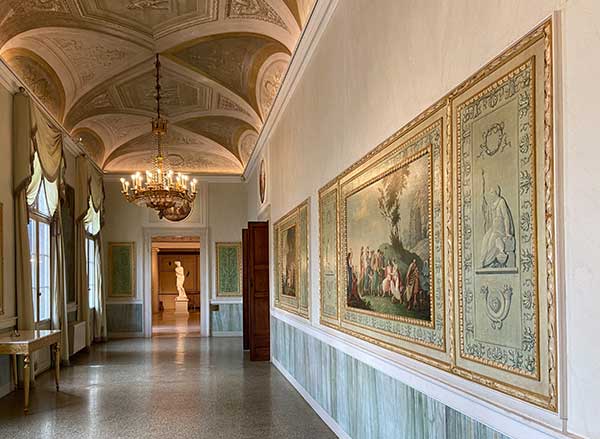
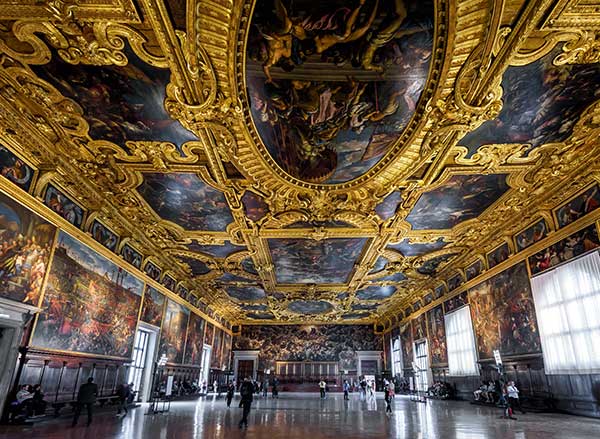
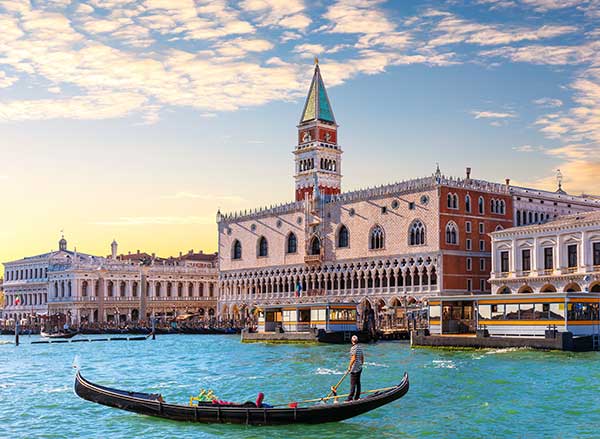
the must-savour
In summer, as night falls and the city is bathed in the warm glow of lanterns and streetlights, Venice takes on a new persona—an enchanting realm of mystery and intrigue. The sound of laughter and music fills the air as trattorias and osterias come to life with Venetian cuisine and culture. At the defining Piazza San Marco, where the cafes are atmospheric after dusk, especially if there is Acqua Alta and high tide sloshes around the feet, just walking around, listening to bands playing live music or sitting at Caffè Florian, one of the oldest bars in Italy, are memory-makers.
Since Venice dates back many years and was open to influences from all over the known world, its food is different than in the rest of Italy. All its six districts offer a smorgasbord of culinary sites and flavours and wandering through the narrow alleys, up and down bridges, through hidden piazzas adorned with marble statues and bubbling fountains, one is transported back in time—the scent of bakes and the aroma of brews wafting in the salty air.
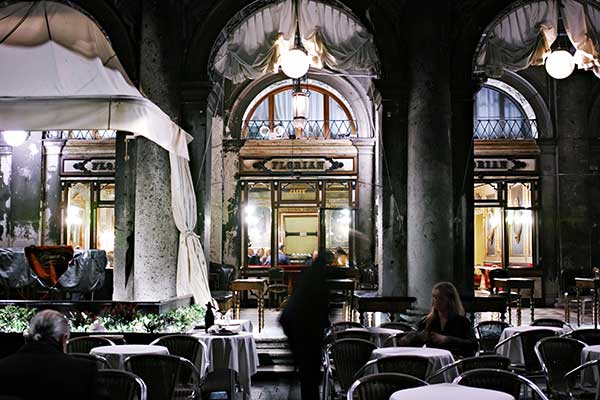
This is more so near Campiello De Le Scoule in Canareggio district, home to the only Jewish bakery in the entire province of Venice and which crafts up unique delights—from Bisse, a cookie typical to Venice, to almond-stuffed pastry Impada, credited to the Spanish-Jewish.
And, at any osteria—typical places where Venetians eat and drink—it is risotto and fish and pasta dishes. Pizza cravings are for Naples. Gritti Palace, one of Italy’s most exclusive hotels, even serves to-die-for ravioli in the shape of gondolas and cod with cannellini cream. Going typically Venetian, a meal at an osteria meal would be cicchetti (from ciccus, meaning small in Latin)—a serving of different kinds of finger food and Raboso wine, traditionally served chilled.
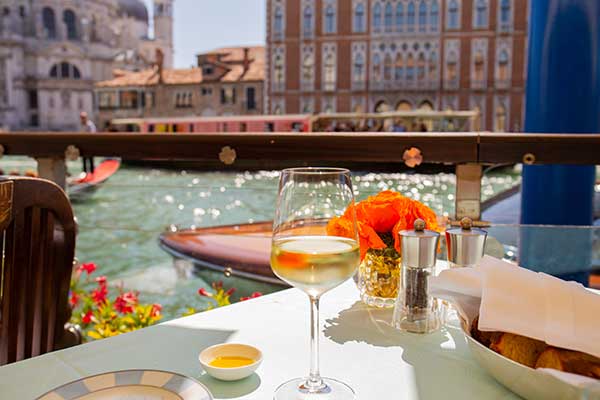
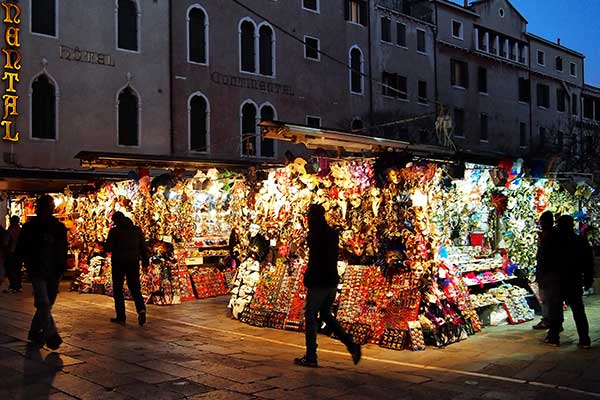
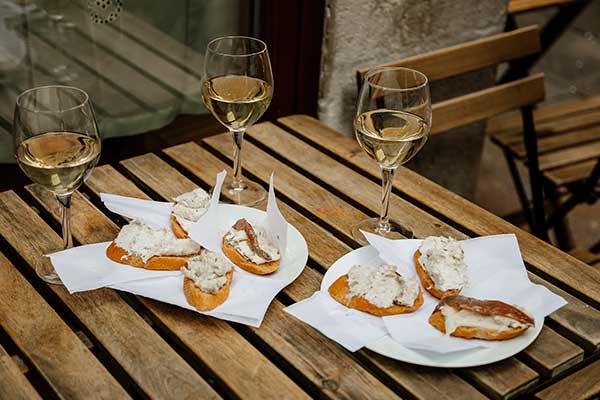
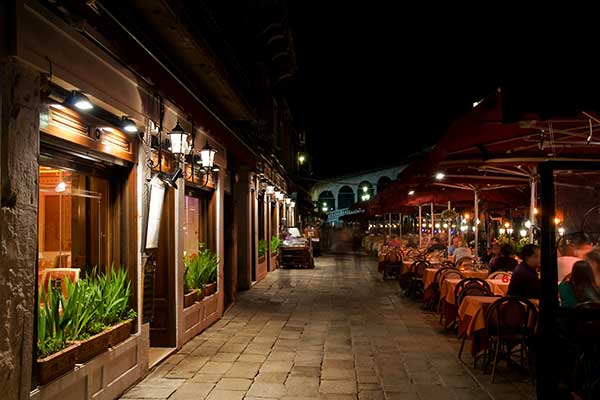
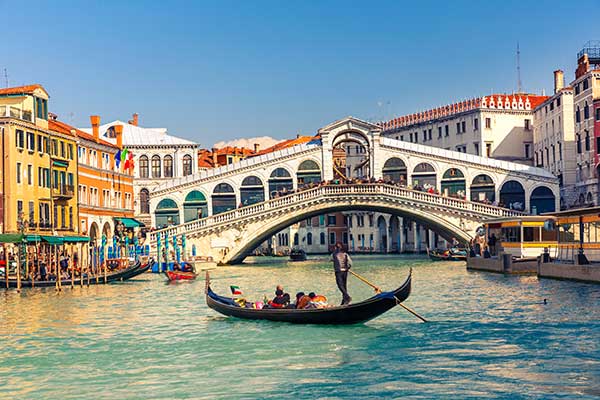
getting lost
Venturing beyond the beaten path, Venice rewards with hidden gems and secret treasures—a crumbling palazzo adorned with frescoes, a secluded canal lined with ancient sycamore trees, a quaint bacaro serving cicchetti and spritz, a wine cocktail that originated in the 1800s in Veneto.
Getting lost in the labyrinth of waterways is much loved of Venice. It is in these waterways that the city truly comes alive, as vaporettos, water taxis, gondolas crisscross and connect this aquatic wonderland. Gliding through the waters in a gondola steered by a skilled gondolier is an experience like no other. Down Grand Canal, one of the world’s greatest public transport routes, the beauty of the Fondaco dei Turchi, Ca’ d’Oro, Ca’ Foscari, and the octagonal Salute church capture the gaze. Away from the Grand Canal, among the quiet and the swish of oars, lies some of Venice’s finest experiences—Venetians going about their jobs and businesses, the atelier of a gold leaf maker who follows the technique that dates back to the 17th century, Gondola Square where gondolas are repaired, and so much more.
Getting lost here is discovering what makes the city tick. Being local.
Time stands still in Venice. It is a city of contrasts, where opulence meets simplicity, and tradition coexists with innovation. And yet, there is a sense of harmony—a timeless elegance that transcends the passage of time.
